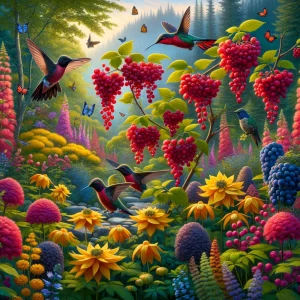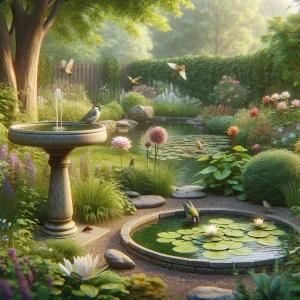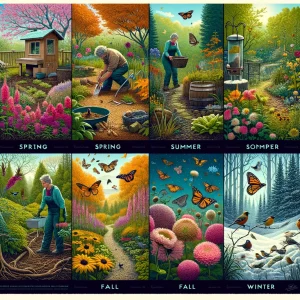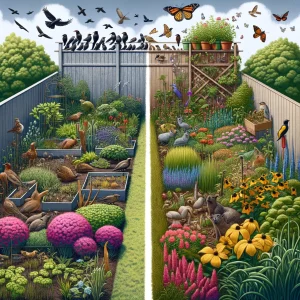In the verdant expanses of British Columbia, the harmony of our local ecosystems relies significantly on the diverse tapestry of wildlife that calls this region home. For novice gardeners looking to make a positive impact, crafting a wildlife-friendly landscape is not just a gesture of environmental stewardship; it’s inviting myriad species to thrive in your backyard. Consequently, this guide aims to demystify the process, offering practical, budget-friendly advice to support local fauna through thoughtful gardening.

The Foundation: Choosing Native Plants
The cornerstone of a wildlife-friendly garden is its plant selection. Native plants offer the most benefits, providing essential nutrients and habitat for local wildlife while requiring less maintenance than their non-native counterparts. Therefore, consider starting with these species:
- Red-flowering Currant (Ribes sanguineum): This plant is a magnet for hummingbirds, especially the Rufous Hummingbird. Its vibrant red blossoms are a springtime spectacle.
- Oregon Grape (Mahonia aquifolium): Its yellow flowers attract pollinators like the Mason Bee, while blue-black berries feed birds in the fall.
- Western Columbine (Aquilegia formosa): With its nectar-rich red and yellow flowers, this plant is irresistible to hummingbirds and butterflies, including the Western Tiger Swallowtail.

Water Features: Essential and Elegant
Water is a critical element in attracting wildlife. A simple bird bath or a small pond can provide a vital water source for birds, insects, and other local fauna. Here’s how to start:
- Choose a spot: A shaded area can reduce evaporation, but if your water feature is also for birds, ensure it’s open enough to give them a clear view of their surroundings to avoid predators.
- Please keep it simple: A shallow dish on a pedestal can be a beginner’s bird bath. For ponds, pre-formed liners are a straightforward DIY installation option.
- Maintain regularly: Keep water clean and replenish it frequently to ensure it remains an inviting and safe drinking spot for wildlife.

Seasonal Maintenance Tips
A wildlife-friendly garden requires year-round attention. First, prepare your garden beds in spring, removing debris and adding compost. Secondly, summer is the time to ensure plants are well-watered and to add mulch to conserve moisture. Furthermore, plant new perennials in the fall and prepare your garden for winter by not cutting down dead plant stalks, as they can provide shelter for insects. Lastly, plan next year’s garden in winter and consider installing bird feeders to support birds when food is scarce.
Budget-friendly Strategies
Creating a wildlife-friendly landscape need not break the bank. Firstly, start small, focusing on critical plants and a simple water feature. Secondly, propagate plants from seeds or cuttings and participate in local plant swaps. Thirdly, utilize natural materials found in your yard for landscaping elements where possible.
Avoiding Common Mistakes
Beginners often make the mistake of over-planting or choosing non-native species that can become invasive. Research plant choices carefully and plan your garden layout to avoid overcrowding. Remember, the goal is to mimic the natural ecosystem, providing a balanced environment for wildlife.

Local Resources and Inspirations
For additional support, the British Columbia Native Plant Society offers resources and community advice for native plant gardening. Moreover, to see wildlife-friendly landscaping in action, visit public spaces like the VanDusen Botanical Garden or the UBC Botanical Garden, which offer inspiration and educational programs on sustainable gardening practices.
Creating a wildlife-friendly landscape is a rewarding venture that enhances the beauty of your outdoor space and contributes significantly to local biodiversity and the well-being of our planet. By starting with native plants, incorporating water features, and following our seasonal maintenance tips, even novice gardeners in British Columbia can create a haven for local wildlife. By embracing these practices, you’ll witness the flourishing of biodiversity and join a growing community of gardeners committed to preserving the natural beauty and ecological balance of British Columbia.
